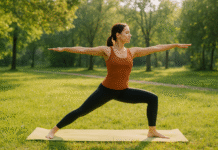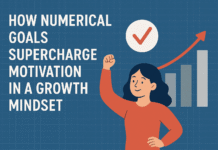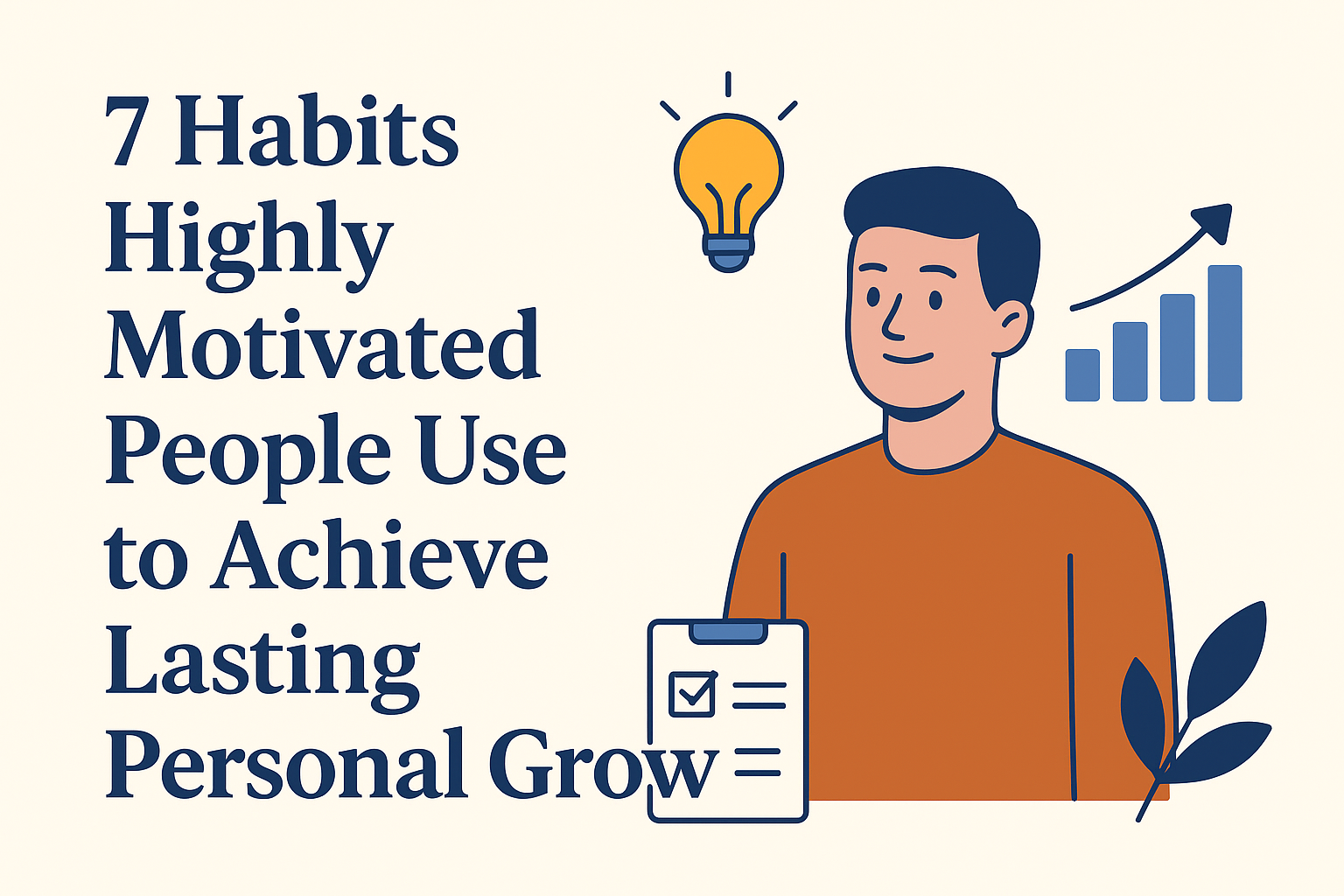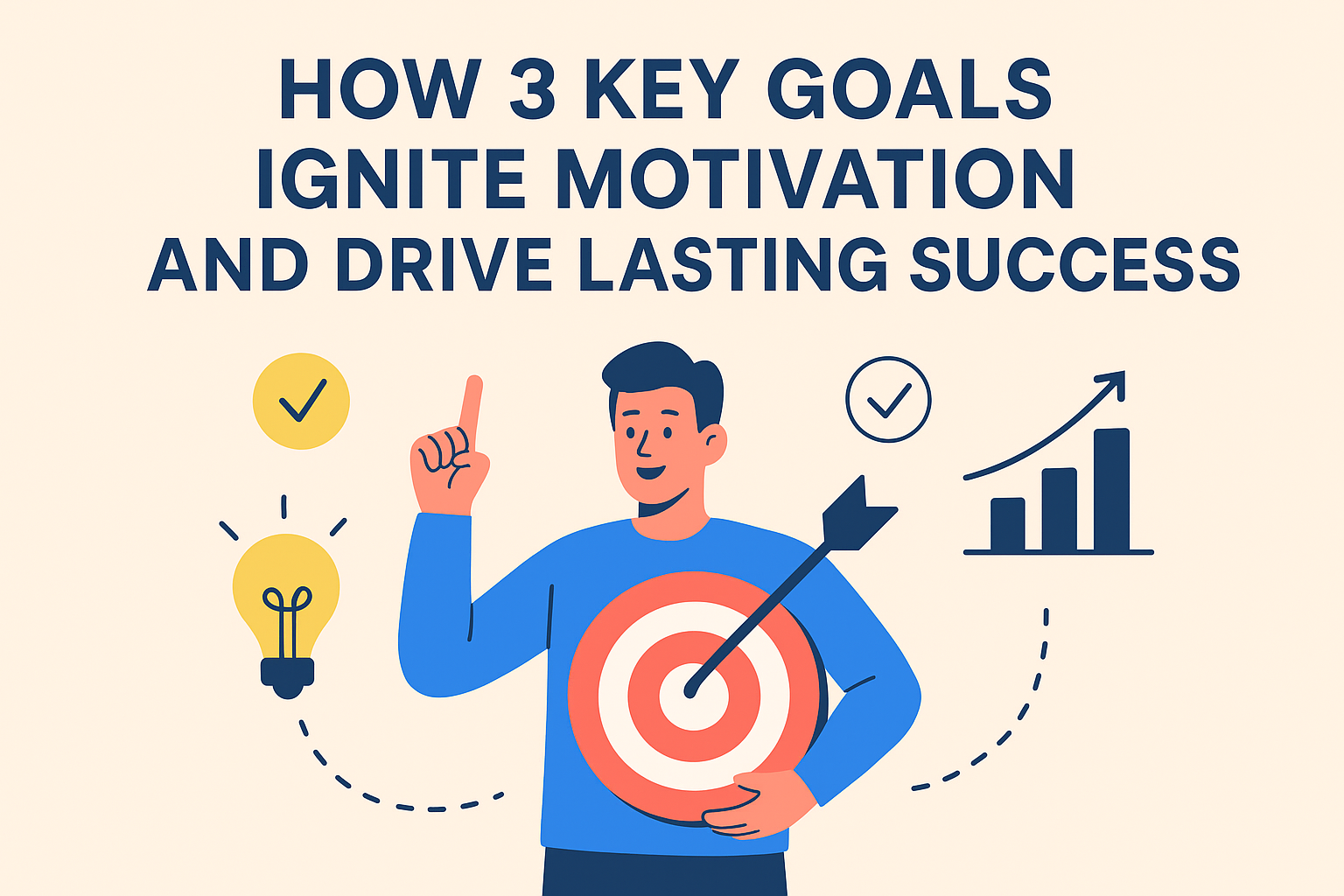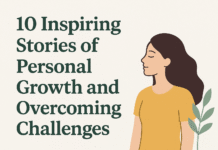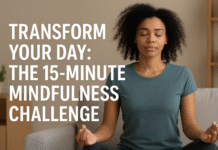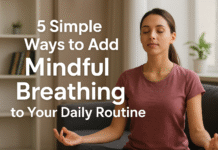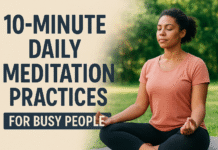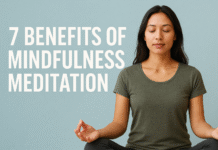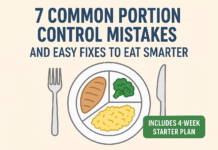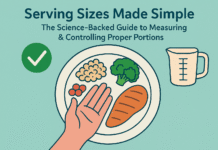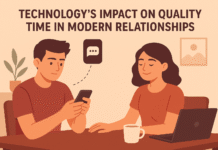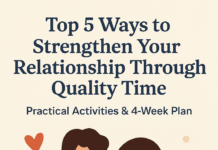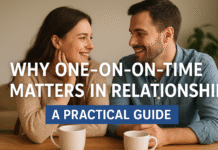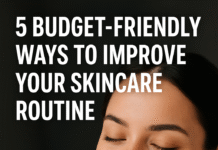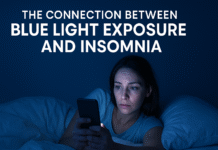If you scroll through your phone, tablet, or laptop in the hour before bed, this article is for you. We’ll explain — in clear, practical terms — how short-wavelength (“blue”) light from modern screens can interfere with the body’s sleep system, what the strongest evidence actually shows, and exactly what you can do tonight (and over the next month) to protect your sleep. This piece is written for real people who want reliable, actionable guidance: shift workers, parents, students, knowledge workers, and anyone who lies awake and wonders if their phone is to blame.
Medical disclaimer: this article is educational and not medical advice. If you have chronic insomnia, a diagnosed sleep disorder, or a health condition affecting sleep, consult a qualified healthcare professional for personalized diagnosis and treatment.
Key takeaways
- Blue light (≈450–480 nm) is the most potent visible light band for suppressing evening melatonin and shifting the circadian clock; this biological sensitivity is why screens can make falling asleep harder.
- Laboratory and real-world studies show evening screen use can delay sleep onset, reduce sleep quality, and blunt next-day alertness in some people — though effects vary by brightness, duration, and individual sensitivity.
- Targeted interventions (screen curfews, dimming lights, warm lighting, blue-blocking lenses) can help, especially for people with insomnia or circadian timing problems — the evidence is promising but mixed, so combine approaches for reliable benefit.
- “Night shift” or color-tint phone modes help a bit but aren’t a magic fix — reducing brightness and screen time usually matters more than tint alone.
- A simple 4-week starter plan (behavior + light hygiene + one tech change) can reduce sleep latency and improve subjective sleep quality for many people.
Why blue light matters for sleep: the biology in plain language
What it is and core purpose
Blue light is a band of visible light with relatively short wavelengths (roughly 450–480 nanometers). Special retinal cells in the eye — distinct from the rods and cones used for vision — are tuned to these short wavelengths and send signals to the brain’s circadian clock. When these cells detect blue light in the evening, they suppress the hormone melatonin and increase alertness: helpful during the daytime, disruptive at night.
Why that matters for insomnia
Melatonin is a biochemical “night” signal that helps your brain switch into sleep mode. Suppressing melatonin in the hours before bedtime can delay sleep onset, shift your internal clock later, reduce deep sleep, and leave you feeling groggy the following day. For people already prone to insomnia or circadian rhythm disorders, evening blue-light exposure can meaningfully aggravate sleep difficulties.
Requirements / prerequisites to act on this information
- The main requirement is awareness and willingness to change evening lighting or screen habits.
- Tools that can help: screen-time settings on phones, night-mode apps, blue-blocking glasses (~$10–$80 depending on lens), dimmable warm bulbs, and basic timers. (Low-cost alternatives are described below.)
Step-by-step beginner implementation
- Assess: Track your device use in the two hours before bed for 3 nights (note duration and activities).
- Reduce brightness: Lower screen brightness in the evening and dim overhead lights.
- Shift activities: Replace stimulating screen time (social media, thrilling video) with lower-arousal tasks (reading paper books, light stretching, journaling).
- Add a filter: Turn on your device’s night shift/blue-light filter and/or enable a full-screen dimmer app.
- Optional: Wear amber/blue-blocking glasses for 1–2 hours before bed if you must use screens.
Beginner modifications and progressions
- Simplify: Start by dimming lights only, then add a 30-minute screen curfew.
- Progress: Move toward a 60–90 minute no-screen window. If you work late, adopt glasses or an amber lamp to protect sleep while staying productive.
Recommended frequency/duration/metrics
- Aim for no screens 60–90 minutes before bedtime for best effect. Track: nightly sleep latency (how long to fall asleep) and subjective sleep quality each morning for 2 weeks.
- If using blue-blocking glasses, wear them for the 1–2 hours before bed. Measure: change in sleep latency and total sleep time (subjective or with a watch/app).
Safety, caveats, common mistakes
- Don’t assume one fix works for everyone. Individual sensitivity varies.
- Avoid turning down color tint without reducing brightness; warm tint alone may leave overall luminous intensity high enough to suppress melatonin.
- Blue-blocking lenses change color perception — avoid driving or using machinery while heavily color-tinted.
- Don’t confuse causal direction: sometimes late-night screen use is a symptom (bedtime procrastination or anxiety), not the root cause.
Mini-plan (2–3 steps)
- Tonight: lower device brightness, enable night mode, and stop social media 60 minutes before bed.
- If still awake after 30 minutes in bed, get up and do a quiet, non-screen activity under dim, warm light.
Evidence snapshot: what science actually shows
What it is and core purpose
This section summarizes laboratory experiments, randomized trials, and systematic reviews that have tested whether evening blue light exposure affects melatonin, sleep timing, and sleep quality.
Key lab findings
- Human studies mapping melatonin suppression show peak sensitivity to short-wavelength light in the ~450–480 nm range — a biological match for modern LED screens. This action spectrum explains why blue light is particularly potent at shifting sleep timing.
Evidence from device exposure studies
- Controlled experiments where participants read on light-emitting e-readers or tablets showed delayed sleep onset, reduced evening melatonin, and worse next-day alertness compared with reading printed books. These lab findings provide direct, mechanistic evidence that evening screen exposure can affect sleep timing.
Intervention trials and reviews
- Several small randomized trials show that wearing amber/blue-blocking lenses for 1–2 hours before bedtime can improve subjective sleep quality and, in some studies, increase total sleep time. Results aren’t uniform, often because sample sizes are small and study populations differ (healthy adults vs. people with insomnia).
- A 2020 systematic review and meta-analysis found mixed but generally positive evidence that short-wavelength light reduction (mostly via tinted lenses) modestly improves sleep efficiency and total sleep time; effects were larger for self-reported measures than objective measures.
- A comprehensive Cochrane review concluded that the quality of evidence is variable and that there may be little or no effect on some outcomes; the bottom line is that blue-filtering lenses and screen filters show promise, but higher-quality trials are still needed.
How to interpret the mixed results
- Differences in results come down to: intensity of evening light exposure, duration, type of outcome measured (self-report vs. actigraphy or PSG), population studied (insomnia patients show larger benefits), and how well the intervention reduces short-wavelength light. Overall, reducing evening blue light is biologically plausible and often helpful, especially when combined with good sleep habits.
Requirements/prerequisites for using evidence
- Expect variability. If you’re healthy with minor sleep complaints, small changes may help modestly. If you have chronic insomnia, use these interventions alongside clinical treatments (CBT-I, medication as directed).
Step-by-step to apply evidence to your life
- Use evidence-backed targets: reduce exposure to short-wavelength light in the 1–2 hours before bedtime.
- Combine behavioral changes (screen curfew) with engineering (dimmer lights, warm bulbs) and optional physical barriers (glasses or filters).
- Track outcomes for 2–4 weeks to evaluate if the approach helps you.
Sample mini-plan (evidence-informed)
- Week 1: Dim lights and enable night modes.
- Week 2: Add a 60-minute no-screen rule before bed.
- Week 3: If still struggling, add amber glasses for the 1-2 hours pre-bedtime.
- Week 4: Reassess sleep latency and quality.
Safety, caveats, common mistakes
- Avoid relying on a single, low-quality study. Use a mix of behavioral and technical fixes.
- Don’t assume that a night-mode tint will fully replace a screen curfew — often it doesn’t.
Practical interventions: step-by-step blue-light hygiene
This is the “how” section. Each item follows the required structure: what it is, requirements/costs, steps, modifications, frequency, safety, and a short mini-plan.
1) Screen curfew (behavioral no-screen window)
What it is and purpose
A screen curfew is a deliberate daily period before bedtime when you avoid screens entirely — typically 60–90 minutes.
Requirements/prerequisites and low-cost alternatives
- No equipment needed. Low-cost alternative: if you can’t avoid screens, switch to low-luminosity, warm light reading (paper book or e-ink with front light turned down).
Step-by-step instructions
- Pick a bedtime and count back 60–90 minutes to set your curfew start.
- Turn off or silence devices; put them out of arm’s reach.
- Replace screen time with low-arousal activities: reading printed books, light stretching, breathwork, or journaling.
Modifications and progressions
- Start with 30 minutes, then increase by 15–30 minutes each week until you reach 60–90 minutes.
- For shift workers, schedule the curfew relative to intended sleep time (e.g., 60 minutes before planned daytime sleep).
Recommended frequency/duration/metrics
- Daily, for 60–90 minutes before scheduled bedtime. Track sleep latency and perceived restfulness every morning.
Safety, caveats, common mistakes
- Don’t use the curfew time for stressful tasks (work emails, doomscrolling), which will counteract benefits.
Sample 2-step mini-plan
- Tonight: set a timer for 60 minutes before bedtime; put phone on Do Not Disturb and out of reach.
- If you get anxious about missing messages, set an auto-reply or inform close contacts of quiet hours.
2) Reduce ambient lighting and swap to warm bulbs
What it is and purpose
Use lower overall light levels in the evening and replace cool white/blue-rich bulbs with warm (amber/red) lighting.
Requirements/prerequisites and low-cost alternatives
- Dimmable warm LED bulbs (from low-cost to premium). Cheap alternative: use lamps with warm-colored shades or low-wattage incandescent bulbs.
Step-by-step instructions
- One to two hours before bed, dim overhead lights and switch to table lamps with warm bulbs (2700 K or lower).
- Avoid bright overhead LEDs and cool white light in the bedroom after your curfew begins.
Modifications and progressions
- If you live in a bright apartment, use blackout curtains later and consider warm night lights in hallways.
Recommended frequency/duration/metrics
- Daily in the evening. Metric: perceived sleepiness and pre-bed calm; objective: sleep latency.
Safety, caveats, common mistakes
- Warm lighting improves sleep cues but won’t fully offset heavy screen exposure. Don’t rely on lamps alone if you continue heavy device use.
Mini-plan (2 steps)
- Replace one overhead hub bulb with a warm lamp and dim it in the evening.
- Use that lamp alone for the last hour before bed.
3) Device settings and apps (Night Shift, blue-light apps, luminance)
What it is and purpose
Modern devices offer “night mode” or blue-light filters that tint the screen amber and sometimes reduce blue spectral output.
Requirements/prerequisites and low-cost alternatives
- Built-in settings on iOS, Android, Windows, and macOS. Apps exist for older devices. Alternative: manually lower brightness and use grayscale mode.
Step-by-step instructions
- Schedule night mode to start 2–3 hours before bed.
- Reduce screen brightness and enable auto-brightness where appropriate.
- For tasks, enable grayscale to make content less alluring.
Modifications and progressions
- If you must work, combine night mode with very low brightness plus warm ambient lamp lighting.
- Consider third-party apps that reduce luminance beyond built-in settings.
Recommended frequency/duration/metrics
- Use nightly; track whether changing content (grayscale) reduces bedtime procrastination.
Safety, caveats, common mistakes
- Evidence shows tinting alone often doesn’t fully prevent melatonin suppression if brightness remains high; lowering brightness matters more.
Mini-plan (2 steps)
- Tonight: set Night Shift to begin 2 hours before bed and drop device brightness to 20–30%.
- If struggling to sleep, add a 30-minute curfew the next night.
4) Blue-blocking glasses and screen filters
What it is and purpose
Spectacle lenses or clip-on filters that reduce short-wavelength light reaching the eye.
Requirements/prerequisites and low-cost alternatives
- Cost: can range from inexpensive ($10) to premium ($100+) glasses. Screen filters are also inexpensive. Low-cost: large sunglasses (not ideal) or orange cellophane over a lamp in emergencies.
Step-by-step instructions
- Choose lenses that specify short-wavelength light blocking (look for transmission curves in product details if available).
- Wear them for 1–2 hours before bedtime when remaining on devices or in bright light.
Modifications and progressions
- If heavy use of devices is unavoidable, use higher blocking at first; scale back as you reduce screen time.
Recommended frequency/duration/metrics
- Nightly during the pre-bed period when you must be exposed to screens. Track subjective sleep quality and sleep latency.
Safety, caveats, common mistakes
- Cochrane and more recent reviews show mixed results: some people benefit, others less so; quality of lenses and timing matters. Don’t expect glasses to fix sleep if you do intense, stimulating activities before bed.
Mini-plan (2 steps)
- Buy basic amber lenses and wear them for the 2 hours before bed for one week.
- Compare sleep latency and perceived sleep quality to the previous week.
5) Morning light exposure (flip the coin)
What it is and purpose
Getting bright daylight in the morning strengthens your circadian signal for daytime and helps make your body feel sleepy at night.
Requirements/prerequisites and low-cost alternatives
- Step outside for 10–30 minutes each morning or sit by a sunny window. If morning light isn’t available (night shifts or winter), consider a light therapy box per clinician guidance.
Step-by-step instructions
- Within 1 hour of waking, spend 10–30 minutes outside or in bright natural light without sunglasses (unless extreme brightness causes discomfort).
- Keep indoor lighting dim in the evening to maintain contrast.
Modifications and progressions
- If morning time is limited, try a brisk 10-minute outdoor walk; if you can do 30 minutes, even better.
Recommended frequency/duration/metrics
- Daily in the morning. Metric: ease of falling asleep and sleep timing consistency.
Safety, caveats, common mistakes
- If you have bipolar disorder, discuss morning light therapy with a clinician as it can sometimes trigger mania.
Mini-plan (2 steps)
- Tomorrow morning: walk outside for 10 minutes with your coffee.
- Repeat daily and note whether you feel sleepier earlier at night.
Tools, costs, and low-budget options
What it is and core benefits
A practical rundown of items you might use and sensible low-cost substitutes.
- Amber/blue-blocking glasses: $10–$100. Low-budget: inexpensive amber glasses from reputable sellers; check return policy.
- Smartphone night mode: free, built into modern phones. Use with reduced brightness for best effect.
- Warm bulbs (2700 K or below) and dimmers: $5–$30 per bulb; dimmer switches vary. Low-cost: plug-in lamp with warm bulb.
- Light therapy box (for morning timing): $50–$200; only for morning use under guidance.
- Blue-light screen protectors: $10–$30; verify spectral reductions if possible.
Steps to evaluate purchases
- Start free: try a screen curfew and night mode for 2 weeks.
- If you still struggle, test amber glasses for a week.
- If anchored to late work, invest in a warm lamp and an approved light tool for mornings.
Safety and caveats
- If you have eye disease or take photosensitizing medications, consult an eye or medical professional before long-term use of intense lighting or certain lenses.
Quick-start checklist (one-page)
- Tonight: reduce screen brightness and enable night mode.
- Put devices away 60 minutes before bed.
- Swap bedroom/household bulbs to warm light or use a dim lamp.
- Get 10–30 minutes of morning daylight.
- If you must use screens late, try amber glasses for 1–2 hours pre-bed.
- Track sleep latency and sleep quality daily for 2–4 weeks.
Troubleshooting and common pitfalls
Problem: “I tried night mode but still can’t sleep.”
- Check brightness: night mode alone with high brightness can still suppress melatonin. Lower overall luminance and consider a curfew or amber lenses.
Problem: “Wearing amber glasses makes colors weird and I can’t work.”
- Use them only for the last 60–90 minutes before bed. For work tasks requiring color accuracy, stop at a set time and switch to warm ambient lighting.
Problem: “I do shift work / sleep during the day.”
- Time your light exposure strategically: bright light during wake time and darkness during planned sleep. Consider specialist advice for chronic shift scheduling.
Problem: “My sleep is still bad after 4 weeks.”
- Insomnia often has multiple causes. Seek a sleep medicine specialist or behavioral sleep therapist for Cognitive Behavioral Therapy for Insomnia (CBT-I) and further evaluation.
How to measure progress (simple metrics you can use)
Short list of useful metrics
- Sleep latency (minutes to fall asleep) — keep diary or use sleep tracker.
- Total sleep time (subjective or actigraphy).
- Sleep quality rating (1–10) each morning.
- Daytime functioning: alertness, mood, and caffeine/nap use.
- Consistency: bedtime and wake time variance across 7 days.
How to run a simple 4-week evaluation
- Week 0 (baseline): record metrics for 7 days with current habits.
- Weeks 1–4: implement the 4-week starter plan below and record metrics daily.
- Compare averages: sleep latency, total sleep time, sleep quality before and after.
A simple 4-week starter plan (roadmap)
Week 1 — Light hygiene & awareness
- Goal: build light awareness and reduce intensity.
- Actions: dim overhead lights 2 hours pre-bed; enable device night mode; track current sleep for baseline.
Week 2 — Behavioral curfew
- Goal: establish a no-screen period.
- Actions: institute a 60-minute no-screen rule before bedtime; if needed, do a 30-minute trial first and increase.
Week 3 — Add protective measures
- Goal: add a technical barrier for unavoidable screen time.
- Actions: wear blue-blocking glasses for the last 1–2 hours if you must use screens, or use a low-brightness e-ink device for reading.
Week 4 — Morning reinforcement & evaluation
- Goal: lock in circadian cues and evaluate progress.
- Actions: spend 10–30 minutes in morning daylight daily; review sleep logs; adjust bedtime based on when you now feel sleepy.
Mini checklists each week
- Week 1: lights swapped or dimmable, night mode scheduled.
- Week 2: phone out of bedroom during curfew.
- Week 3: glasses ordered or filters applied.
- Week 4: morning light added; measure progress.
Expected outcomes
- Many people see modest improvements in sleep latency and subjective quality in 2–4 weeks; those with insomnia may see larger benefit when combined with therapy.
Frequently asked questions (8–12 concise Q&As)
- Does blue light cause insomnia?
Blue light is one factor that can worsen or trigger insomnia by suppressing melatonin and shifting circadian timing. It’s rarely the single cause; behavioral habits and mental health also matter. - Is night-shift/night-mode on my phone enough?
Night modes help modestly, but brightness and total light exposure matter more. Night mode without lower brightness may not prevent biological effects. - Do blue-blocking glasses really work?
Some randomized trials found improved sleep with amber lenses, especially for people with insomnia; systematic reviews report mixed but promising results. They’re a reasonable, low-risk option if you need evening screen time. - Can I just use my phone at low brightness?
Yes — low brightness reduces melatonin suppression risk. Combine low brightness with warm tint, shorter exposure, or a curfew for best effect. - What about “red light” — is that better?
Redder light has longer wavelengths and is less likely to suppress melatonin. For evening lighting, warm/amber/red tones are preferable to blue-rich white light. - Will blocking blue light harm daytime vision or mood?
Brief evening use of amber lenses is low risk. Avoid long-term daytime use; if you notice mood changes, talk to your clinician. - Are kids more sensitive?
Younger eyes transmit more short-wavelength light to the retina, so children may be more sensitive to evening blue light. Extra caution is reasonable: limit evening screen exposure and use warm lighting. - How long before bed should I stop screen use?
Aim for 60–90 minutes before bed. Shorter windows (30 minutes) can help, but longer windows give stronger results. - If I have to work at night (shift work), what should I do?
Strategically use bright light during your work/wake period and ensure very dark sleep conditions. Consult a specialist for tailored shift-work plans. - If my sleep doesn’t improve, what next?
If problems persist >4 weeks despite changes, seek assessment — CBT-I and professional evaluation are effective for chronic insomnia.
Conclusion
Blue-wavelength light is biologically powerful and — especially in the evening — it can make falling asleep harder and shift your internal clock later. The science shows a clear mechanism and several controlled studies demonstrating measurable effects; clinical trials and systematic reviews suggest that practical interventions (screen curfews, reduced brightness, warm lighting, and, in some cases, blue-blocking glasses) can improve sleep for many people, particularly those already struggling with insomnia. The most reliable approach is not a single “hack” but a combination: reduce evening light exposure, protect late screen sessions with blocking strategies, and reinforce daytime cues like morning sunlight. Try the 4-week starter plan above, track your progress, and if sleep problems persist, reach out to a sleep clinician.
One-line CTA: Tonight, dim your lights, turn off screens 60 minutes before bed, and see whether you fall asleep faster — small changes add up.
References
- An action spectrum for melatonin suppression: evidence for a novel non-rod, non-cone photoreceptor system in humans. Journal article. Publication date: 2001. URL: . PMC
- Evening use of light-emitting eReaders negatively affects sleep, circadian timing, and next-morning alertness. Proceedings of the National Academy of Sciences (PNAS). Publication date: 2015. URL: . PNAS
- Blocking nocturnal blue light for insomnia: A randomized controlled trial. Journal of Psychiatric Research. Publication date: 2018 (Epub 2017 Oct 21). URL: . PubMed
- Interventions to reduce short-wavelength (“blue”) light exposure at night and their effects on sleep: A systematic review and meta-analysis. Sleep Advances. Publication date: 2020 Jun 4. URL: . PMC
- Blue-light filtering spectacle lenses for visual performance, sleep, and macular health in adults. Cochrane Database of Systematic Reviews. Publication date: 2023 Aug 18. URL: . PubMed
- Epidemiology of Insomnia: Prevalence, Course, Risk Factors, and Public Health Burden. Journal article (review). Publication date: 2022. URL: . PubMed
- Does the iPad Night Shift mode reduce melatonin suppression? (Laboratory study). Publication date: 2019 (PMC article). URL: https://pmc.ncbi.nlm.nih.gov/articles/PMC6561503/. PMC


